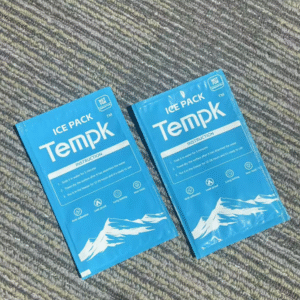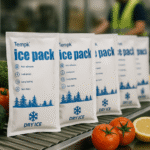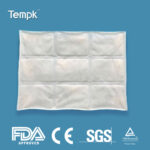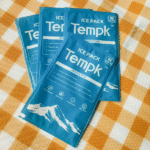If you use dry ice packs to ship food, success comes down to right‑sizing ice, vented pack‑outs, and clear UN1845 labeling. This guide gives you simple rules, a one‑minute calculator, Dan 2025 compliance tips so your frozen or 2–8 °C products arrive safe, hard, and on time. It unifies three internal drafts into a single, search‑optimized article.
-
Estimate dry ice mass for 24–72 h lanes with lane length and insulation in mind (TAIL PANJANG: how many dry ice packs for 48 jam).
-
Build safe pack‑outs that vent CO₂ and protect texture (TAIL PANJANG: vented packaging for dry ice).
-
Apply labels and rules that cut counter rejections in 2025 (TAIL PANJANG: Ini pi 954 UN1845 marking).
-
Choose gel vs. es kering or a hybrid for mixed‑temp boxes (TAIL PANJANG: dry ice vs gel packs for shipping).
How many dry ice packs to ship food do you need for 24–72 h?
Start with 3–5 lb per 24 h for EPS foam, 2.5–4 lb for EPP, and 2–3 lb for VIP liners. Add 20–30% buffer and topload blocks. This keeps most small–mid boxes frozen for 24–72 h while avoiding over‑ or under‑packing.
Mengapa ini berhasil:
Heat leaks through your shipper’s walls and lid. VIP (vacuum‑insulated panel) loses less heat than EPS or EPP, so you need less dry ice. Blocks beat pellets for long lanes because lower surface area slows sublimation. Put dry ice packs to ship food above the payload behind a rigid divider to protect packs, breads, and chocolate from “freezer burn.” Validate your first lane with a probe on delivery and tune up or down by ~20%.
Dry ice blocks vs. pelet vs.. gels—what lasts longer?
Blocks generally last longest; pellets chill fastest; gels control 2–8 °C best. Use gels alone for chilled foods or combine gels + dry ice for mixed loads.
| Opsi pendingin | Hold-time profile | Penanganan / aturan | Apa artinya bagimu |
|---|---|---|---|
| Es kering blok | Slow burnoff, best for 36–72 h | Sarung tangan, vented box, UN1845 | Long lanes, rock‑solid frozen meats & es krim |
| Es kering pelet | Fast pulldown, shorter hold | Same as above | Quick freeze; top off with blocks for margin |
| Gels / PCM 2–8 °C | Stable fridge temps | No hazmat labeling | Cheeses, produce, cokelat; Tidak ada risiko pembekuan |
Tips Praktis & saran
-
Weekend risk: If Friday delivery is possible, add one extra block or ship Mon–Wed.
-
Jalur musim panas: Use EPP or VIP plus paper void fill to reduce warm air circulation.
-
Mixed box: Cradle chilled items in gels; add a divider; dry ice packs to ship food ride on top.
-
Probe it: A $20 temp logger on the first run saves guesswork on all future runs.
Hasil dunia nyata: A 48 h meal‑kit lane held frozen using ~5 lb blocks in an EPP shipper with a rigid divider; ~1 lb remained at receipt—matching the baseline estimator and confirming margin.
How should you pack and label dry ice packs to ship food safely?
Jawaban Langsung:
Top‑load dry ice above the product, Jaga agar paket beralih, dan Mark: “Dry ice” (Karbon dioksida, padat), UN1845, and net weight (kg). Leave the Class 9 hazard diamond visible for air. USPS air allows ≤5 lb per mailpiece; IATA PI 954 applies for air cargo.
Explain it simply:
CO₂ expands as dry ice sublimates. Vented boxes prevent pressure build‑up and protect handlers. Most airline counters use an acceptance checklist that mirrors PI 954: Nama pengiriman yang tepat, Nomor PBB, Kg net, and visible Class 9 label. Postal air limits dry ice to 5 lb; ground rules still require venting and markings when applicable. Keep labels on a vertical face and never write inside the diamond. Dry ice packs to ship food with gels below a divider when you must protect texture.
Quick pack‑out steps (copy for your SOP)
-
Pre‑freeze product; pre‑chill shipper.
-
Add inner liner; stage gels around texture‑sensitive items.
-
Place a rigid divider/shelf.
-
Top‑load dry ice packs to ship food (blocks preferred).
-
Fill voids with paper; tinggalkan jalur ventilasi; close firmly (tidak kedap udara).
-
Mark “Dry ice/Carbon dioxide, padat,” UN1845, NET WT: X.X kg.
When should you bukan use dry ice packs to ship food?
Jawaban Langsung:
Avoid dry ice for 2–8 ° C. shipments like cheeses, produce, and many confections. Menggunakan PCM/gel to hold a tight refrigerator range and prevent freezing.
More detail:
Dry ice is ~–78.5 °C. Direct exposure can over‑chill and damage texture. Untuk muatan campuran, build a hybrid: gels around sensitive items, a rigid divider, Dan dry ice packs to ship food above for frozen goods. Mark cartons “Perishable—refrigerate on arrival” to cue last‑mile handling.
Penolong keputusan: gel, es kering, or hybrid?
Dry ice packs to ship food vs. gels: which is better and when?
Jawaban Langsung:
Es kering wins for anything that must stay beku; gels/PCM win for 2–8 ° C.. Hibrida wins for mixed payloads or texture‑sensitive items.
Mengapa itu penting:
Choose the coolant to match your food’s safe zone, bukan sebaliknya. Ice cream and raw meats want frozen temps; cheeses, produce, and many chocolates want 2–8 °C. Hybrids reduce over‑freezing claims and cut dry‑ice mass, lowering cost and CO₂ exposure risks while keeping dry ice packs to ship food only where needed.
Biaya & risk snapshot
| Route length | Shipper grade | Typical dry ice (LB/24H) | Your takeaway |
|---|---|---|---|
| 24–36H | Busa EPS | 4–5 | Add one extra block in summer |
| 36–48H | EPP rigid | 4.5–6 | Prefer blocks over pellets |
| 48–72H | VIP hybrid | 5–7 | Smallest box, highest efficiency |
Compliance checklist for 2025 (udara, postal, tanah)
-
Markings: “Es kering/karbon dioksida, padat,” UN1845, Berat bersih (kg), visible Kelas 9 label.
-
Kemasan: Ventilasi; tidak pernah kedap udara.
-
Kargo udara: Iata PI954 berlaku; airlines use acceptance checklists.
-
Postal (US): Domestic air ≤5lb dry ice per mailpiece; international postal prohibits es kering.
-
Tanah (US): Venting and net mass marking where required; follow 49 CFR guidance.
These points reflect widely used 2025 checklists and job aids that reduce counter rejections.
2025 perkembangan & trends in dry ice shipping
Apa yang baru 2025:
Carriers clarified acceptance checklists (PI 954 terms, net‑kg marking, visible Class 9). Postal guidance re‑affirmed the ≤5lb domestic air mailpiece limit. Brands increasingly standardize hybrid pack‑outs (PCM + es kering) to curb texture claims and shrink insulation volume, while validating lanes with simple loggers. Dry ice packs to ship food remain the frozen workhorse; gels increasingly handle 2–8 °C with less waste.
Kemajuan terbaru sekilas
-
Clearer labels: Where to place UN1845, Kg net, and keep the diamond unobstructed.
-
Hybrid norms: Fewer over‑freezing complaints and lower coolant mass in mixed boxes.
-
Kualifikasi: Sederhana, SOP‑driven pack‑outs plus a one‑time lane validation.
Wawasan pasar:
Meal‑kit and DTC categories are up‑training teams on sanitary transportation (FSMA expectations) and using pre‑qualified shippers for 2–8 °C and frozen. Expect more lightweight EPP/VIP kits, printable label blocks, and in‑box temp indicators to document success without adding cost.
FAQ
1) Apakah saya memerlukan deklarasi pengirim untuk es kering?
Not when dry ice cools non‑dangerous goods. Use the dry‑ice acceptance checklist, mark UN1845, Kg net, and keep the package vented.
2) How cold should product be on arrival?
Makanan beku: 0 ° f (–18 ° C.) or colder; chilled foods: 2–8 ° C.. Validate with a simple logger on first runs.
3) Can I send dry ice packs to ship food via USPS?
Yes for domestic air up to 5 lb of dry ice per mailpiece; vent and mark correctly. International postal shipments do not allow dry ice.
4) Blocks or pellets—what lasts longer?
Blok. Lower surface area slows sublimation. Use pellets only when you need fast pulldown.
5) What if my box includes cheese and ice cream?
Build a hybrid: gels around cheese, rigid divider, dry ice packs to ship food above for the ice cream.
Ringkasan & Rekomendasi
Choose coolant to match the temperature target; top‑load dry ice, Ventilasi kotaknya, Dan mark UN1845 + Kg net. Expect ~3–5 lb per 24 h (EPS) and less with EPP/VIP; dry ice packs to ship food work best as blocks on lanes >36 H. Validate your first lane and adjust ±20%.
Rencana aksi (CTA):
-
Use the estimator to size your first lane.
-
Standardize a divider‑first pack‑out with printable labels.
-
Run one instrumented test; document results in your SOP.
-
Book a 15‑minute consult—get a custom UN1845 label block and lane‑specific calculator.
Tentang tempk
We design cold‑chain pack‑outs that hit target temperatures with fewer claims. Our guidance aligns with IATA PI 954, USPS limits, and DOT venting rules, and we validate lanes with simple loggers so you can ship with confidence. We also provide reusable gels/PCM, pre‑qualified EPP/VIP kits, and label templates ready for your team.
Langkah selanjutnya: Get a free lane audit and a custom label block today.
























